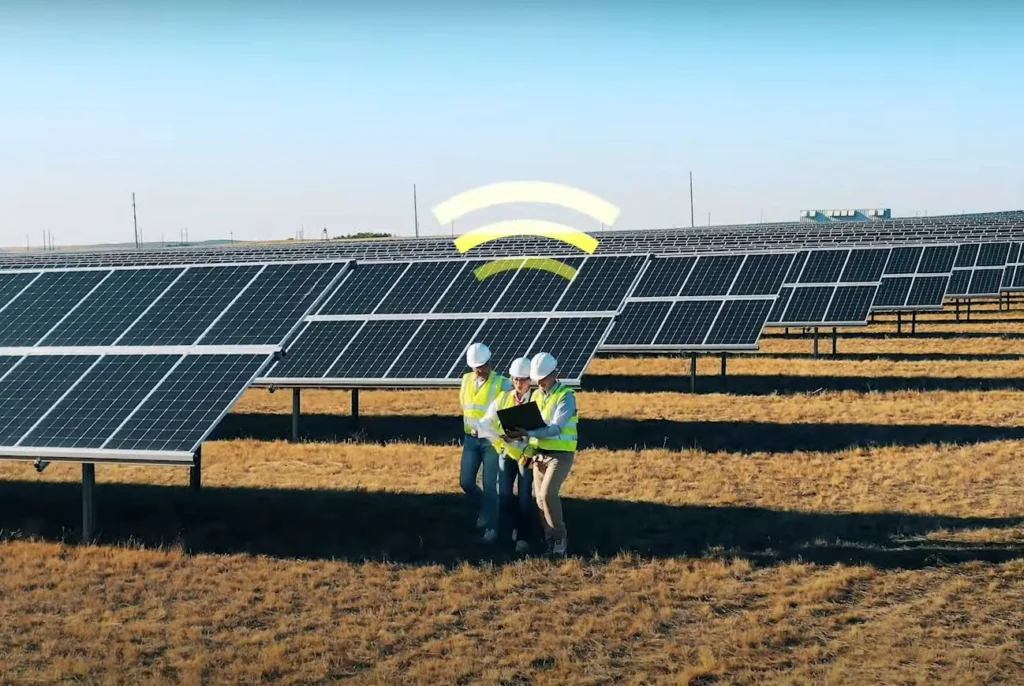In today’s more networked world, wireless communication is essential. In this context, one technology that has gained significant traction is the Low Power Wide Area Network (LPWAN). A kind of wireless network called LPWAN is made to send small amounts of data over long distances. Because of its low power consumption, it is perfect for Internet of Things (IoT) applications.

We will go into greater detail about what LPWAN is, how it functions, its benefits, and its use in different application areas in the sections that follow.
How does LPWAN operate and what is it?
Low Power Wide Area Network is what LPWAN stands for. As the name implies, these are networks that provide wide-area coverage while consuming little power. Because of this combination, LPWAN is especially well suited for uses like Internet of Things applications where small amounts of data must be transferred over long distances.
LPWAN technologies optimize range and reduce energy consumption through multiple techniques. Among them is the application of unique modulation techniques that enable signal reception at extremely low signal intensities. To further cut expenses, a lot of LPWAN technologies are made to function in license-free frequency ranges.
An explanation of private wireless networks
Benefits of LPWAN
LPWAN is superior to other wireless communication technologies in a number of ways. The long range is one of the key benefits. Data can be transmitted across several kilometers using LPWAN networks. They are therefore perfect for applications in broad domains like infrastructure monitoring or agriculture.
An additional noteworthy benefit is the reduced energy usage. With LPWAN technology, devices can frequently operate for years between battery changes. They are therefore perfect for uses where it would be impractical or unfeasible to change batteries on a regular basis.
Furthermore, LPWAN provides high capacity, allowing numerous devices to function on a single network. This is a crucial component for Internet of Things applications, as networking thousands or even millions of devices is frequently required.
And lastly, secure data transmission is made possible by LPWAN. Numerous LPWAN technologies come equipped with built-in security measures, like authentication and encryption, to guarantee the security of the data being transferred.
LPWAN application areas
Because of its advantages, LPWAN technology is now being applied in a variety of fields. The Internet of Things (IoT) is one of the most significant areas. In this case, LPWAN makes it possible to network distant devices that merely need to exchange little amounts of data. Home automation systems, smart city applications, and agricultural sensor networks are a few examples.

However, LPWAN is not limited to this use case. For instance, asset tracking uses it to keep track of the whereabouts and state of products. It can be used to remotely monitor and control energy networks in the energy sector. Additionally, it can be used to manage medical equipment and keep an eye on patient data in the healthcare industry.
In conclusion, LPWAN is an essential technology for many other application areas as well as the Internet of Things. It presents special opportunities because of its long-range data transmission capabilities, low energy consumption, and support for numerous devices on a network. In the upcoming years, LPWAN is anticipated to become even more crucial as technology develops and IoT applications proliferate.
Standards and technologies
The LPWAN industry is made up of different technologies and standards, each with unique properties and application areas. Among the most well-known are Sigfox, NB-IoT, and LoRaWAN.
LoRaWAN

An open standard called LoRaWAN (Long Range Wide Area Network) uses LoRa modulation technology for LPWAN. Its long ranges—up to 15 kilometers in rural areas and several kilometers in urban areas—are its defining characteristics. Long battery life and a large number of nodes in a network are also made possible by it.
Sigfox
Sigfox is a low-volume Internet of things application-specific proprietary LPWAN. Although the data rate is much less, it offers a range that is comparable to LoRaWAN. However, because of the centralized model, there is also very little energy consumption and a simpler network structure.
NB-IoT
A technology called NB-IoT (Narrowband IoT) was created especially to meet the needs of IoT in the licensed spectrum. It has a high penetration rate in buildings and a long range. Because NB-IoT operates in licensed frequency bands and provides better quality and security, it is especially well-suited for applications that demand high reliability and security.
Each of these technologies has benefits of its own and works well in various application scenarios. The precise needs of the intended application, such as those pertaining to cost, energy consumption, data rate, and range, will determine which technology is best.
Challenges and LPWAN’s future
Even with all of the benefits, using LPWAN has drawbacks. The difficulty of interoperability is one of these. Connecting devices from different manufacturers or even different networks can be challenging because there are differences in LPWAN technologies and standards. Here, more development and standardization initiatives are required.
Security-related issues are another point. Even though a lot of LPWAN technologies have built-in security features, the growing network of devices necessitates ongoing monitoring and modification to reduce security threats.
It is anticipated that LPWAN will continue to be a crucial technology for the expanding Internet of Things in the future. Technologies that allow for widespread, economical, energy-efficient, and device networking will become more and more necessary. Furthermore, advancements in machine learning and artificial intelligence will create new LPWAN application opportunities, such as the intelligent processing and analysis of data produced by LPWAN devices.
In summary
In conclusion, LPWAN is and will continue to be an essential technology for the Internet of Things as well as numerous other application domains. Numerous technologies and standards are at one’s disposal, providing a multitude of options to satisfy the unique needs of diverse applications. Simultaneously, additional investigation and advancement are required to tackle the current interoperability and security challenges. It is anticipated that in the upcoming years, LPWAN’s significance and influence will only grow due to the ongoing advancements in these fields.